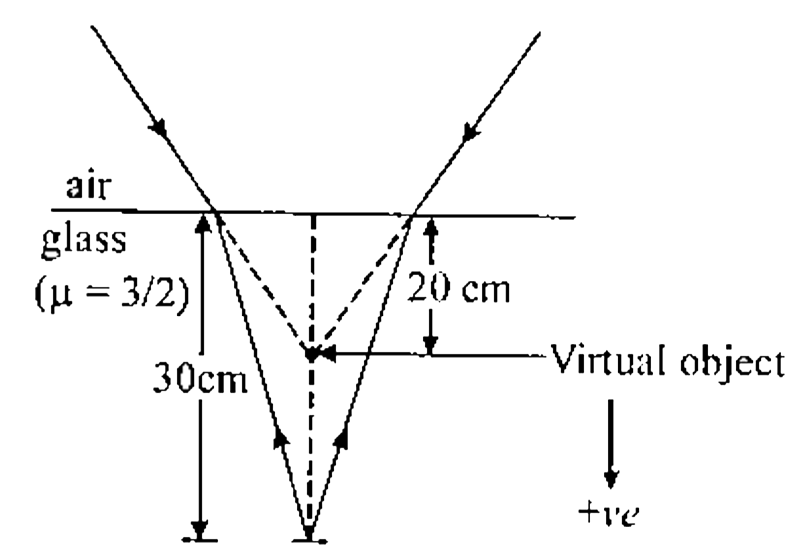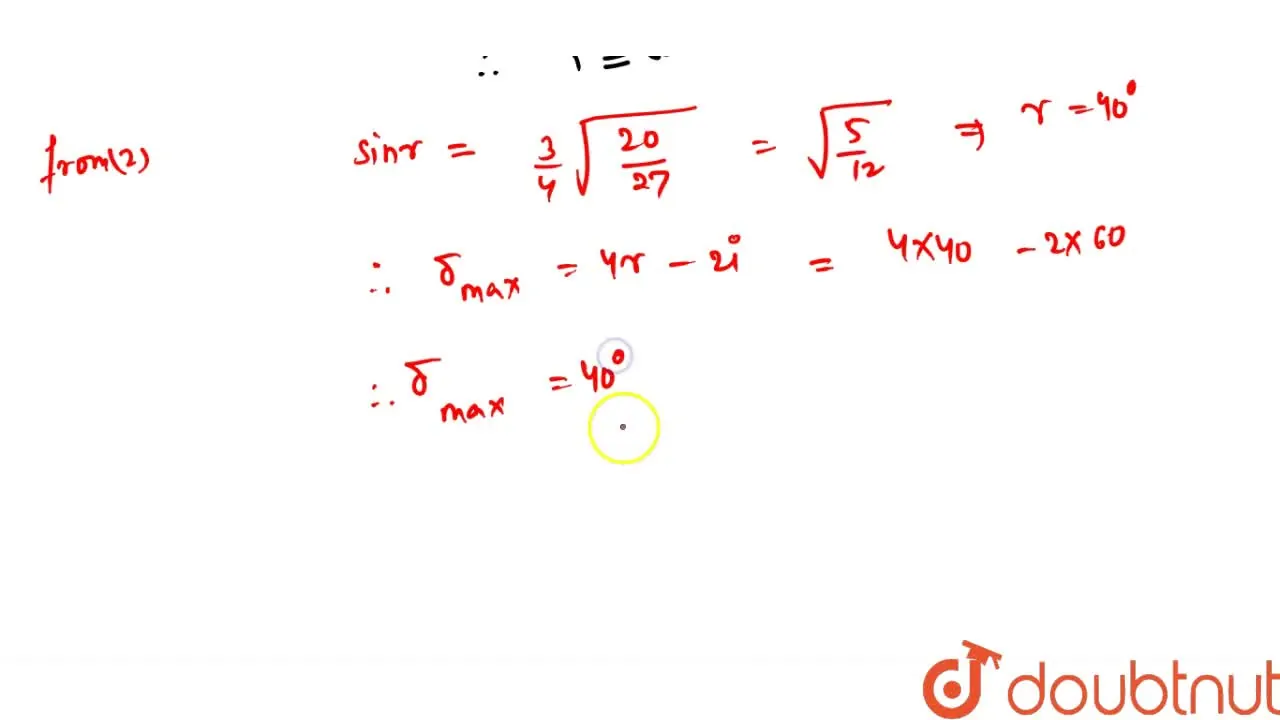A parallel beam of light is incident on a spherical drop of water . Consider refraction of light at air-water interface, then reflection at water-air boundary (of course there will be refracted light energy in air as well), followed by refraction at water-air interface. Path of a typical ray refracted at A, then reflected at B and finally refracted at C has been shown in the Figure. Find the maximum value of angle . use and .

The correct Answer is:
Step by step video, text & image solution for A parallel beam of light is incident on a spherical drop of water (mu = 4//3). Consider refraction of light at air-water interface, then reflection at water-air boundary (of course there will be refracted light energy in air as well), followed by refraction at water-air interface. Path of a typical ray refracted at A, then reflected at B and finally refracted at C has been shown in the Figure. Find the maximum value of angle delta. use sin^(-1) sqrt((20)/(27)) = 60^(@) and sin^(-1) sqrt((5)/(12)) = 40^(@). by Physics experts to help you in doubts & scoring excellent marks in Class 12 exams.
Related Playlists
Similar Questions
A water drop in air refractes the light ray as
View SolutionA parallel beam of monochromatic light is incident on the surface of water having refractive index 4/3. The direction of the incidence beam bisects the angle between the normal to the water surface and the water surface. The angles of incidence and refraction are
View SolutionA ray of light is incident on the interface between water and glass at an angle i and refracted parallel to the water surface, then value of μg will be
 View Solution
View SolutionA ray of light is incident on the interface between water and glass at an angle i and refracted parallel to the water surface, then value of μg will be
 View Solution
View SolutionA ray of light enters a spherical drop of water of refractive index μ as shown in figure.

Q. Select the correct statement:View SolutionA ray of light travelling in air goes into water. The angle of refraction will be:
View SolutionIf refractive index of water with respect to air is then refractive index of air with respect to water is
View SolutionA light ray is incident perpendicularly to one face of a 90∘ prism and is totally internally reflected at the glass-air interface. If the angle of reflection is 45∘, we conclude that the refractive index n
 View Solution
View SolutionA converging beam of light rays incident on a glasa-air interface as shown in figure. Find where these rays will meet after refraction.
 View Solution
View SolutionThe refractive index of water witih respect to air is 43. The refractive index of air with respect to water will be:
View Solution


